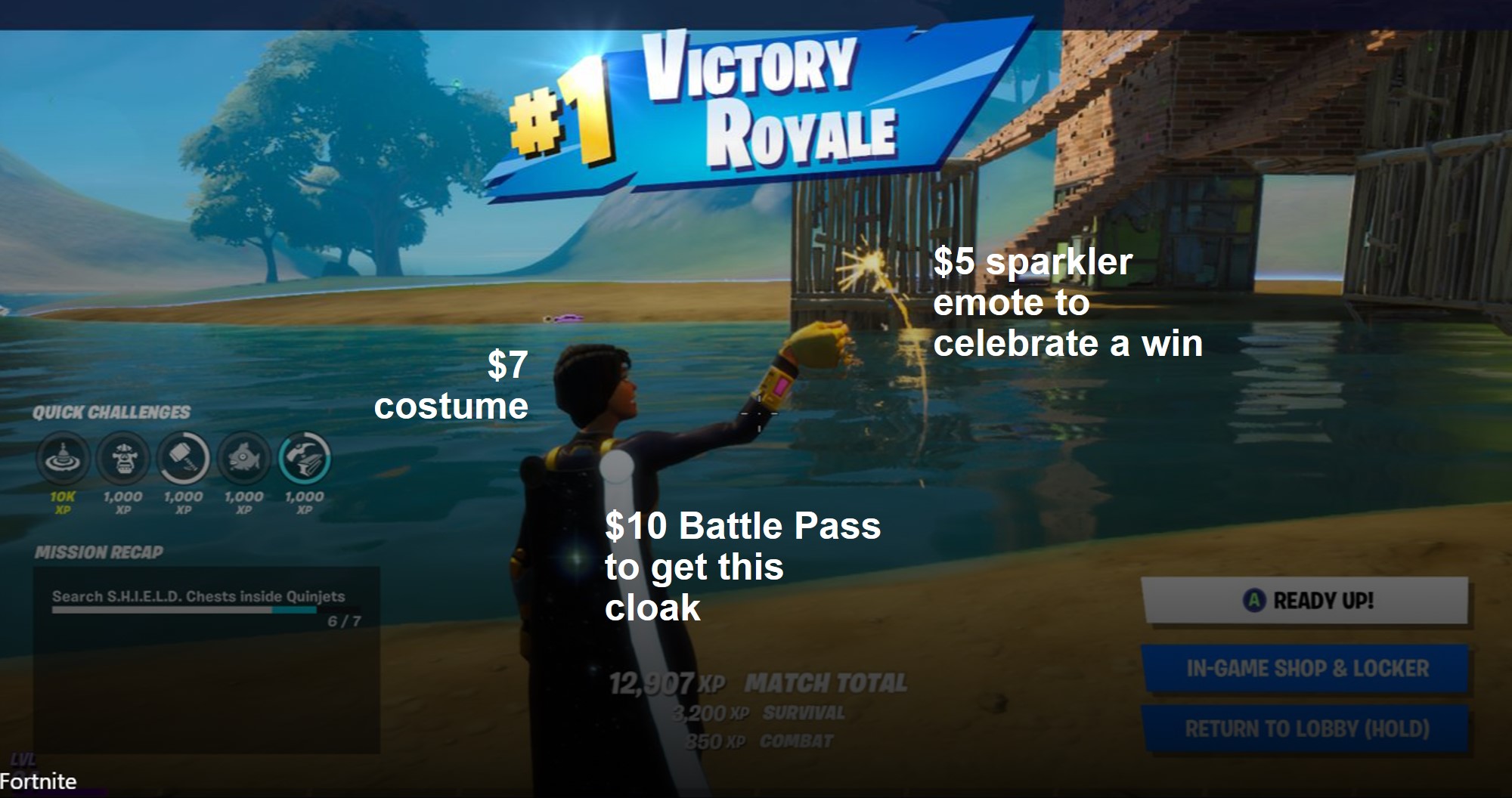자격 증명 채우기가 비디오 게임을 점점 더 표적으로 삼는다
비디오 게임 사업이 호황을 누리고 있습니다. 그리고 그저 호황이 아니라 엄청나게 호황이에요.
강제로 실내에 머물러야 했던 광범위하고 매우 다양한 고객 기반이 "미국에서 비디오 게임 시장을 37% 증가시켜 33억 달러에 이르렀다"고 시장 조사 기업 NPD Group이 밝혔습니다. (출처: 석영 )
이는 "무료 게임"이라는 점점 더 인기를 얻고 수익성이 높은 비즈니스 모델의 원동력이 됩니다. 이 게임은 무료이며 마이크로트랜잭션을 통해 게임 내 디지털 자산을 구매하는 옵션을 제공합니다. 기억하시겠지만 캔디 크러쉬는 이 모델을 현실로 만든 최초의 게임 중 하나였습니다. Gamestop에 따르면 " 캔디크러쉬 모바일 게임 시리즈는 2018년에 iOS와 Android에서 마이크로트랜잭션을 통해 총 15억 달러 이상의 수익을 냈습니다. 이는 하루 평균 420만 달러에 달하는 엄청난 금액입니다."
요즘 우리 가족 전체가 "엔터테인먼트" 예산을 게임 내 자산에 쓰고 있어서 저도 이러한 증가에 기여하고 있다는 걸 인정합니다. 꼭 게임이 아니라 게임 내 자산에 한합니다. 이 스크린샷을 살펴보세요. 여기에는 게임 자체에는 아무런 영향을 미치지 않는 약 22달러 상당의 게임 내 디지털 자산이 포함되어 있습니다. 다른 곳에서는 사용할 수 없습니다. 대부분의 게이머는 수십 개 또는 수백 개의 의상과 이모티콘, 기타 디지털 화장품을 가지고 있습니다. 비용은 빠르게 늘어납니다.

이 모델은 점점 더 수익성이 높아지고 있습니다. 2019년 Epic Games의 인기 배틀 로얄 게임인 Fortnite는 "Nielsen Company인 SuperData Research가 보고한 데이터에 따르면 18억 달러의 수익을 올렸습니다." (출처: Investopedia )의 사업 모델은 전적으로 소액 거래에 기반을 두고 있습니다.
물론, 소액결제는 신용카드와 PayPal과 같은 결제 처리업체의 지원을 받습니다. 그것은 이다 정보 공격자는 게임 계정에 접근해서 정보를 손에 넣으려고 합니다.
최근 Atlas VPN에서 분석한 데이터는 논리적이면서도 무섭습니다. 결국, "돈을 따라가라"는 표현은 정치인의 동기를 이해하는 것만큼 공격자의 동기를 이해하는 데도 똑같이 적용 가능한 표현입니다. 해당 회사는 "해커들이 2018년 7월부터 2020년 6월까지 무려 98억 3천만 번 게이머를 공격했다"는 사실을 발견했습니다. 즉, 플레이어는 하루에 약 1,400만 건의 공격을 받고 있으며, 시간당 58만 4,000건의 공격을 받고 있습니다."(출처: 정보보안버즈 )
게이머들은 잠재적인 영향을 알지 못하는 것은 아니다. 2020년 여름에 실시한 게이머들의 우려 사항에 대한 설문 조사에 따르면, 게이머들은 자신의 신용카드 정보(49.1%)를 가장 걱정하는 것으로 나타났으며, 계정이 해킹당할까봐 걱정하는 것으로 나타났습니다. (원천: Atlas VPN 블로그 ) "계정 접근"과 "게임 내 자산 손실"도 뒤따랐다는 점에 유의하시기 바랍니다. 경쟁 게임과 스트리밍 게임 플레이가 수입원으로 부상하면서 이런 우려는 생각보다 피상적이지 않습니다.
이러한 계정은 공격자에게 매우 귀중한 자산이므로, 이 계정을 겨냥한 대규모 공격이 발생하는 것은 놀라운 일이 아닙니다. 이러한 계정은 다른 산업의 계정과 마찬가지로 여러 플랫폼(웹사이트, 콘솔, 모바일 폰)에서 액세스하는 데 사용될 수 있으므로 이를 노릴 만큼 영리한 사람이라면 여러 공격 벡터를 통해 수익성이 좋은 대상이 될 수 있습니다.
그리고 계정에 금융 계정 데이터가 없다면, 그들은 항상 불법 게임 계정 시장에서 디지털 계정을 판매할 수 있습니다.
예. 그런 것이 존재해요. 이는 모든 게임 회사의 정책 및 서비스 약관에 어긋나지만, 발생하는 일입니다. 자주.
신임장 정보 유출은 디지털 존재감을 지닌 모든 산업에 실질적인 위협입니다. 비디오 게임 산업도 마찬가지입니다. 우리가 단순한 디지털 경제가 아니라 디지털을 중심으로 한 경제로 전환하는 추세에 따라, 이러한 위협은 반드시 해결해야 할 문제입니다.
그렇기 때문에 사기와 남용을 탐지하고 차단하는 데 사용되는 기술을 지속적으로 개선하는 것이 중요합니다. 모든 산업은 신임장 정보 유출 공격에 대항하여 최상의 보호 수단을 구축하는 데서 이익을 얻을 수 있습니다.
